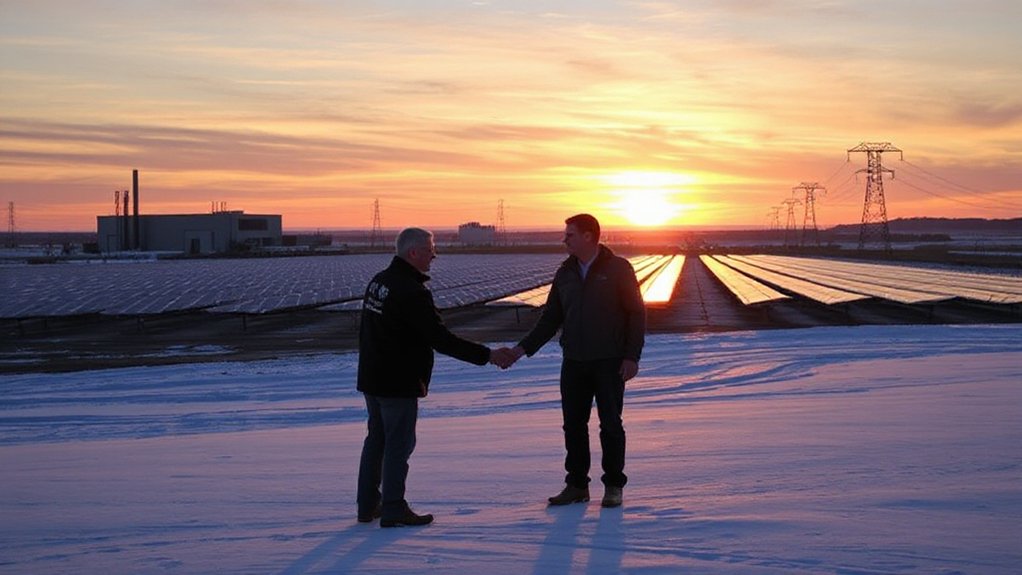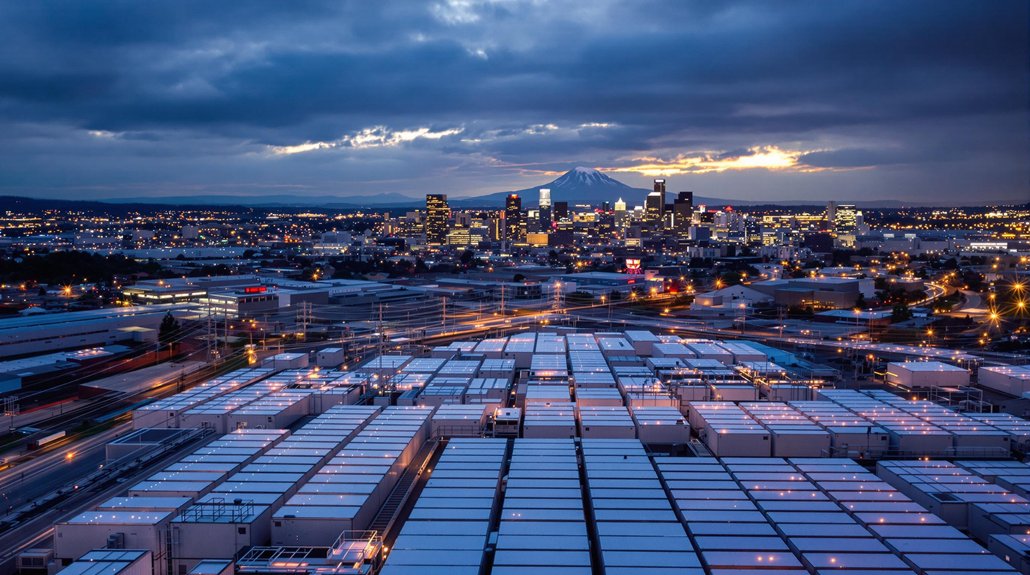California stunned energy experts with 100 days of carbon-free electricity in 2024, proving skeptics wrong. Solar now generates 22% of in-state power, but the real game-changer? Batteries. These technological marvels store excess solar energy during sunny periods and pump it back when needed. Critics who doubted renewable reliability are eating their words. California’s ambitious 2045 carbon-free mandate suddenly looks less like fantasy and more like a blueprint others will follow.
The numbers don’t lie. California just hit 100 days in 2024 where carbon-free electricity flowed through the grid. Not all day, but hey, it’s progress. The secret weapon? Batteries. Lots of them. They’re soaking up excess solar during sunny hours and pumping it back when the sun calls it quits.
Solar now accounts for 22% of in-state electricity, up from 13.8% in 2021. That’s what happens when you actually commit to something. The Golden State’s clean energy milestones keep falling like dominoes, shocking even the skeptics who claimed it couldn’t be done.
California’s renewable revolution isn’t just talk—it’s measurable progress that’s silencing critics with each fallen milestone.
Senate Bill 100 isn’t just fancy legislation collecting dust. It’s forcing real action, mandating a carbon-free grid by 2045. That means building renewable infrastructure at unprecedented rates. No small task. California aims to add 6,000 to 8,000 megawatts of new energy resources annually to meet these ambitious targets.
Battery deployment has literally transformed how the grid functions. This transformation aligns with global projections showing battery storage costs will decrease by 52% by 2030. Remember those rolling blackouts? Less common now. Batteries stabilize the whole system when solar panels go dormant and wind turbines decide to take a breather. They’re the unsung heroes of the renewable transformation.
California’s grid was already 59% renewable in 2021. Fast forward to today, and the numbers are even more impressive. The state has integrated historic amounts of battery storage in recent years, aligning perfectly with environmental goals. The state is basically giving a masterclass in scaling renewable energy. Other states are taking notes. Some are even copying homework.
Grid reliability used to be the biggest argument against renewables. “What happens when the sun doesn’t shine?” Critics loved that line. Well, batteries happened. They’re maintaining stability while cutting dependence on fossil fuels during peak hours. Even during heat waves and wildfires.
The change isn’t complete. Far from it. More infrastructure is needed as electrification spreads to transportation and buildings. Demand will skyrocket. But California has proven the skeptics wrong so far. Clean energy can be reliable energy. And batteries are making it possible. Not tomorrow or someday. Right now.
References
- https://calmatters.org/environment/climate-change/2024/08/california-clean-power-progress-grid/
- https://www.caiso.com/about/our-business/managing-the-evolving-grid
- https://www.gov.ca.gov/2024/10/15/california-exceeds-another-clean-energy-milestone/
- https://greenlining.org/2024/demystifying-equity-in-californias-energy-grid-transition/
- https://cse-net.org/california-solar-battery-storage-growth/








